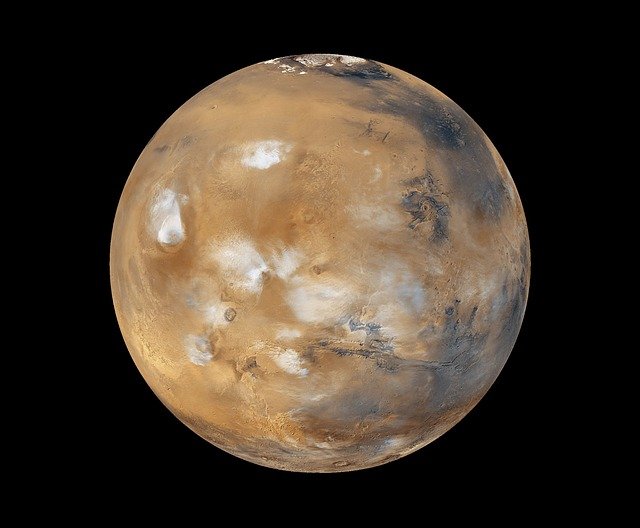Now that we have learned enough science an advanced enough with our technology, why not go live on mars? Makes sense, right? Not yet actually.
It is in the news that we will be sending people on mars in 2022-24. The fact is, we will only be sending a few people to learn more about how mars would affect us if we go and live there. And if survival turns out to be easy enough, we'll soon have Martian real estate businesses!!
We still have many obstacles to overcome. Also, we have found solutions to most of these problems. We will talk about all of these in detail.
We spend a major part of our lives fulfilling our basic needs – air (free on earth), water, and food. And we also need protective shelter and clothing. (And an internet connection of course... I'd be bored to death without it). If we are to settle on mars, the least we will need is all of these. Satellites will help with communication.
I'll dedicate one post for each of these problems so we could understand things more clearly. In this post, we shall discuss our problem with breathing on mars.
Our lungs are evolved for the atmosphere on earth. Some of us are also evolved to be able to breathe in low pressures at the top of the mountains. But this is nothing compared to the atmosphere on mars. Let's see why.
We know that at our room temperature, where pressure is 1 atm or about 100 kPa, water boils at 100 °C. And we also know that it gets difficult to breathe as we go to higher altitudes, for example, at Mount Everest, where the pressure is about 33 kPa.
At a lower pressure, water boils at a lower temperature. At a pressure as low as 0.0618 atm or 6.3 kPa, water starts boiling at room temperature. This is known as the Armstrong Limit.
If our bodies are subjected to a pressure below the Armstrong limit, all the water that we have in the form of saliva, tears, and the alveoli in the lungs, start boiling immediately, since our bodies are hot enough. Such an incident has actually happened and the survivor stated that before falling unconscious, his last memory was the water on the tip of the tongue starting to boil. And he was conscious for only about 14 seconds.
Now let's compare this with the pressure on the surface of mars, which is average 0.6 kPa. This means, we will always, strictly, have to wear pressure suits, or be in an air tight room with enough pressure, to be able to breathe. This is a big problem right now. Let's see if we can solve this.
Our findings have suggested that mars had liquid water on it about 3 billion years ago, but now we only have a cold and dry planet with ice on its poles and some seasonal frozen lakes. What happened was the solar wind, which happens all the time. Solar wind is a continuous flow of plasma coming from the sun. It is comprised of charged particles, mostly electrons and protons. These particles are magnetized, i.e. they have their own magnetic field.
We are protected on earth from the solar wind by the magnetic field of earth. This magnetic field interacts with the charged particles in the solar wind to form what we call the earth's magnetosphere. And this magnetosphere is what helps a lot in protecting the entire atmosphere on earth from getting ripped off by the solar wind. Sadly, this is what happened to mars about 3 billion years ago.
A lack of magnetosphere on mars made it very difficult for the atmosphere to exist at higher pressures. And the solar wind is of course ripping off whatever little bit of atmosphere still left.
Now our Earth has a magnetosphere because it has a magnetic field, and it has a magnetic field because its core is a powerful magnet. This is not the case on mars. The core of mars is not a powerful magnet. Hence, it has a magnetic field too weak to protect its atmosphere from the solar wind.
Now that we understood the problem, let's see how we can solve this.
One solution we can work on at present is using the resources available on mars to create an atmosphere artificially. And create it at a much higher rate than the rate at which the solar win is ripping it off. Or simply, we add more atmosphere than what is being taken away. This would raise the atmospheric pressure above the Armstrong limit, and possibly to a point where we humans can breathe. May be we will also need a little help from genetic engineering in this case.
We haven't yet clearly figured out how to achieve this, but this definitely seems possible. The problems here are, first that we may consume the resources on mars at much higher rate since we are awesome at consuming resources (that's what we are doing to earth), plus, we would already be losing some amount of them to the solar wind. And second, since mars’ gravity is 38% that of earth’s, to attain the same pressure of 100Kpa, we would need 2.6 times more amount of column air mass to be released in the atmosphere, some of which are not available on mars.
In future, perhaps we will figure out a way to magnetize mars' core to make it more habitable, or should I say breathable… Check out these references for more information about this.
- https://en.wikipedia.org/wiki/Terraforming_of_Mars
- https://pixabay.com/en/mars-planet-space-cosmos-sphere-884709/
- http://www.swpc.noaa.gov/phenomena/earths-magnetosphere
- https://www.nasa.gov/centers/goddard/news/topstory/2005/mgs_plates.html
- http://www.hou.usra.edu/meetings/V2050/pdf/8250.pdf
- https://www.forbes.com/sites/startswithabang/2017/07/15/ask-ethan-is-it-foolishness-to-dream-of-terraforming-mars/
- https://www.space.com/31044-mars-terraforming-nasa-maven-mission.html
See you soon. Take care.

